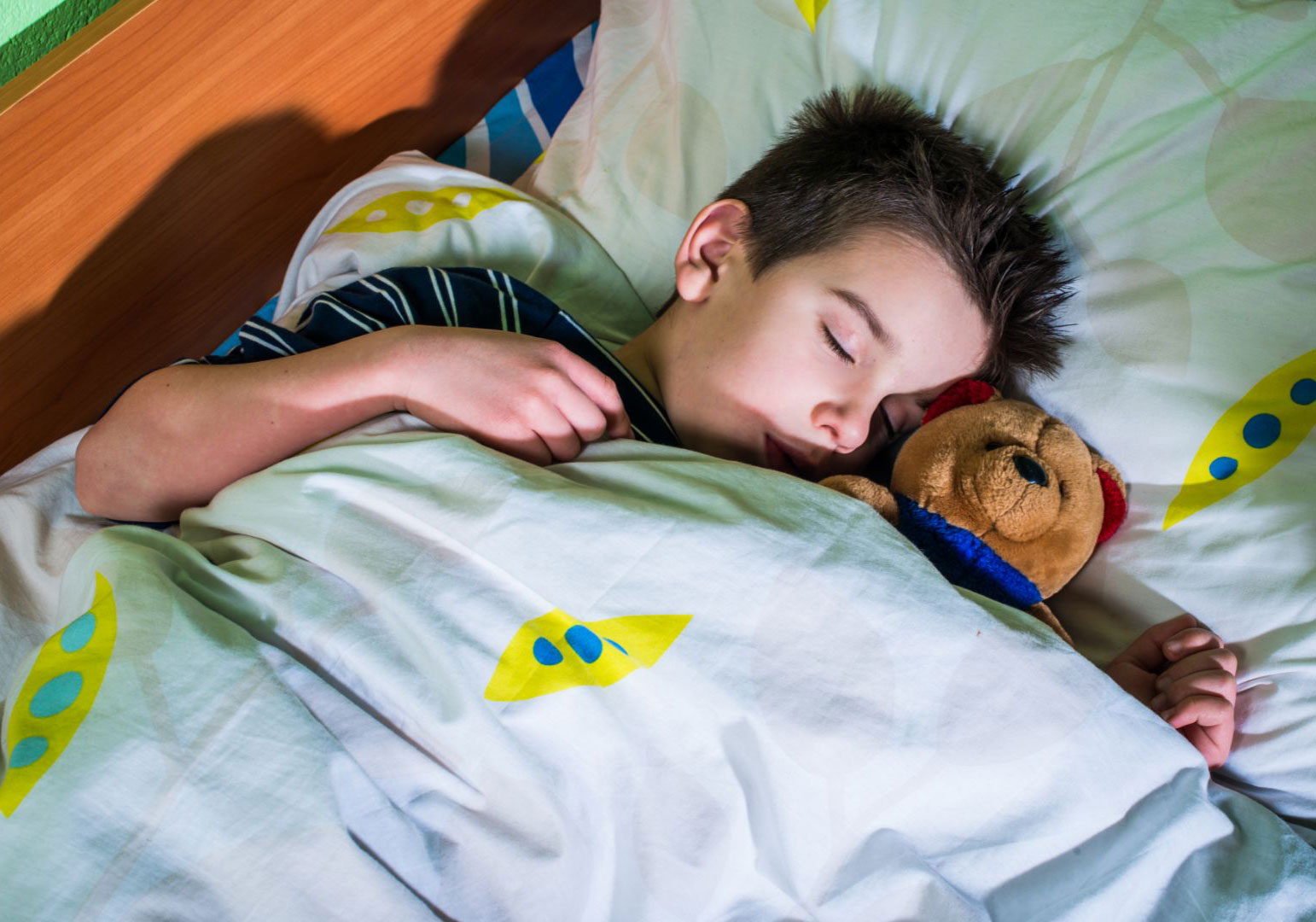According to CDC data, 6 million children were diagnosed with attention-deficit hyperactivity disorder (ADHD) from 2016-2019, making it one of the most common neurodevelopmental disorders for individuals aged 3-17 years old. Around 77% of diagnosed children receive some type of treatment for this condition in the form of medication, behavior intervention, or both. In a past blog about childhood ADHD, we went into depth about how this disorder presents itself in our youth and what kinds of symptoms to look out for when you may suspect that a child has this disorder. Of course, despite how widespread this condition may seem, an ADHD diagnosis can initially be overwhelming for children and their families. Whether it be behavior management, therapy, or medication — many parents wonder what the best and most impactful way to help their child may be.
In this blog post, we will explore a new FDA-cleared device, the external Trigeminal Nerve Stimulation (eTNS) system, which may be the solution for parents who are searching for an alternative way to reduce the effects and symptoms of pediatric ADHD. Previous research has shown that there is a great demand for non-pharmacological ADHD treatments. Around 30% of children who take medication for ADHD experience unpleasant symptoms (like insomnia and weight loss) or do not respond to medication, so a new treatment option like the eTNS may be good news for those who want to try something different.
What is External Trigeminal Nerve Stimulation?
In April 2019, the U.S. Food and Drug Administration authorized marketing for the external Trigeminal Nerve Stimulation (eTNS) system — the very first medical device to treat ADHD in children between the ages of 7 to 12 years old. This device is considered to be an innovative option for patients who are not currently taking medication for ADHD, and are searching for non-drug treatment to combat symptoms. The official name of this device is the Monarch eTNS system, and bioelectric medical device company, NeuroSigma, was granted authorization by the FDA to commercialize and market this product.
Trigeminal Nerve
Before going further, it may be helpful to explain what the trigeminal nerve is, and its significance in the body. The trigeminal nerve is located within the brain, part of which is above the eyebrows. It is tasked with sending sensory information from the face to the brain, so whenever you feel heat, cold, or any type of touching sensation on your face, the trigeminal nerve helps your brain recognize what is going on. This nerve serves as a pathway to important brain regions that are associated with mood, self-control, and attention — and even helps us when we bite, chew, and swallow. Safe to say, this nerve plays a variety of roles in our brain!
In our bodies, we actually have two trigeminal nerves. One nerve is found on the right side of the brain, and the other is found on the left. Each nerve begins in the brain, and then they terminate at different locations of the face, dividing into three separate branches. These branches are known as the ophthalmic nerve, the maxillary nerve, and the mandibular nerve. As a quick overview, the:
- Ophthalmic nerve – is associated with the upper part of the face. It controls eye sensations, upper eyelids, and forehead information.
- Maxillary nerve – is associated with the middle part of the face. It controls cheek, nostril, upper lip/gum, and lower eyelid sensations.
- Mandibular nerve – is associated with the lower part of the face. It controls jaw and lower lip/gum sensations. This is the nerve that also helps us bite, chew, and swallow.
In addition to its relevance to pediatric ADHD and the eTNS system, the trigeminal nerve is also associated with trigeminal neuralgia (TN), a type of disorder that is caused by nerve damage. About 150,000 people are diagnosed with this condition every year, women are more likely than men to develop it, and it is most commonly found in people over 50 years old. TN is characterized by sudden, acute face pain on one side of the face, and may even present itself as a burning or aching sensation. The pain can come on spontaneously, and is usually first experienced along the upper or lower jaw.
The Process of eTNS
As the name suggests, the Monarch eTNS system is intended for non-invasive stimulation of the trigeminal nerve. The electrical system delivers low-level electrical pulses to the branches of the trigeminal nerve, which then replays therapeutic signals to the different parts of the brain that are considered to be involved with ADHD. The Monarch eTNS system is comprised of a:
- External pulse generator
- 4 pouches of disposable NS2 electric pouches
- 7 patches, 1 week supply
- Battery charging station
- AC adaptor
- 2 rechargeable lithium polymer batteries
- Two lead wires
- One instruction manual
The use of the device is recommended to be under the supervision of a caregiver, and is utilized at night when the child is sleeping. To very briefly run through the steps, the caregiver must essentially:
- attach one of the single-use electric patches to the child’s forehead before bedtime
- connect the lead wire to two connectors that are located on the patch
- connect the wires to the electric pulse generator, which is roughly the size of a standard cellphone
- Begin the treatment
- The treatment consists of 30 second cycles that allow the electric pulse generator to stimulate the trigeminal nerve. It should feel like a light tingling on the forehead.
When the device is turned on, the generator provides 30 seconds of electrical stimulation, and then 30 seconds of rest. When the device is resting, you cannot change the current delivered. When the device is providing stimulation, you can change the amount of current being administered until the correct amount is reached. After this point, you can lock this level of stimulation until the device is turned off in the morning. Essentially, the child will receive about 8 hours of therapy from the time they go to bed to the time they wake up in the morning. After this, the wires are disconnected and the patch is removed and subsequently discarded.
Does eTNS work?
According to clinical trials, there is evidence to support Monarch’s eTNS efficiency. In one study, researchers tested this system’s ability to treat ADHD by comparing the effects of the eTNS device versus a placebo device. 62 children with moderate to severe ADHD were enrolled in the trial, and some of the children were prescribed to either use the eTNS system or a placebo device every night for four weeks. Researchers used the ADHD Rating Scale, or ADHD-RS, to measure differences at the beginning of the trial versus the end. The higher the score on the ADHD-RS, the more severe and frequent ADHD symptoms are. Conclusions of the trial showed that subjects who used the eTNS system had statistically significant improvements in ADHD symptoms as compared with the placebo group. At the conclusion of the 4-week study, ADHD-RS scores decreased from 33.7 to 27.5 points in the placebo group, and the eTNS group saw a decrease from 34.1 to 23.4 points.
In another study, 24 children with ADHD aged 7-14 were studied for 8 weeks. Once again, the ADHD-RS was used to measure progress, but this study also included the Clinical Global Impressions Scale-Improvement (CGI-I), which asks clinicians to measure how they would rate the severity of an individual’s illness in relation to their past experience with other patients who have the same diagnosis. This trial showed that after 4 weeks of using Monarch eTNS, 64% of children showed improvements on the CGI-I rating scale. After the full eight week trial, 71% of children showed improvements on the CGI-I rating scale, and a 47% decrease on the ADHD-RS, meaning that their ADHD symptoms became less severe and less frequent compared to baseline measures. In addition, researchers also conducted EEG readings on the patients before and after treatment. Results showed that children who used the eTNS system showed increased activity in the middle and right frontal regions of the brain, and these regions help regulate emotions and attention.
Lastly, a 4-week trial demonstrated that 52% of children with ADHD who were prescribed the eTNS showed clinically meaningful improvement in their ADHD symptoms, while another group of children with ADHD who received a placebo device showed only a 14% improvement. However, it is also necessary to address some symptoms that children experienced while using the eTNS system. Some potential side effects of using the eTNS include:
- Drowsiness
- Appetite increase
- Sleep trouble
- Teeth clenching
- Fatigue
- Changes in weight and pulse
- Headaches
These trials did not demonstrate any adverse events associated with use of this device, and no children withdrew from the studies due to adverse side effects. The eTNS is designed to be a convenient and easy device for caregivers to use, and is considered a ‘low-risk’ option for parents and caregivers to consider when exploring how to treat pediatric ADHD. As we have previously mentioned, this device is a prescription-only treatment, and it is necessary to consult a doctor before making any decisions about using the eTNS system. Some limitations about who can use this device are as follows. It cannot be used:
- in children under 7 years old
- in patients with an active implantable pacemaker
- in patients with an active implantable neurostimulator
- in patients who have insulin pumps
- in the presence of radio frequency energy, like MRI
Overall, the Monarch eTNS system provides a non-invasive method for parents and caregivers to help their children manage their ADHD in a way that does not involve medical or behavioral therapy. You can learn more about the Monarch eTNS system here on their website: https://www.monarch-etns.com. When appropriate in children diagnosed with ADHD, this device can be prescribed by any US licensed medical prescriber.







